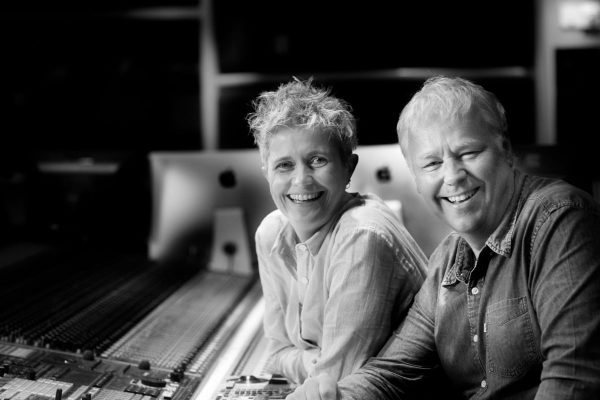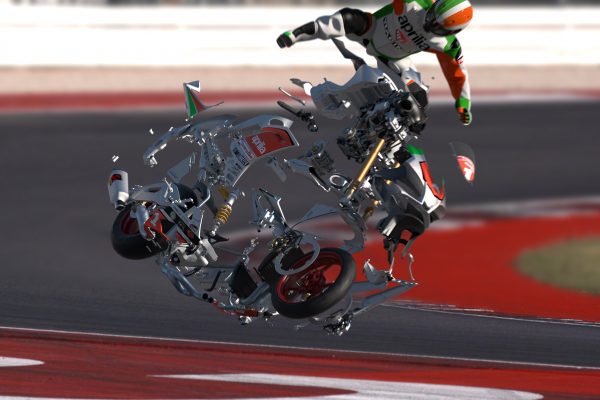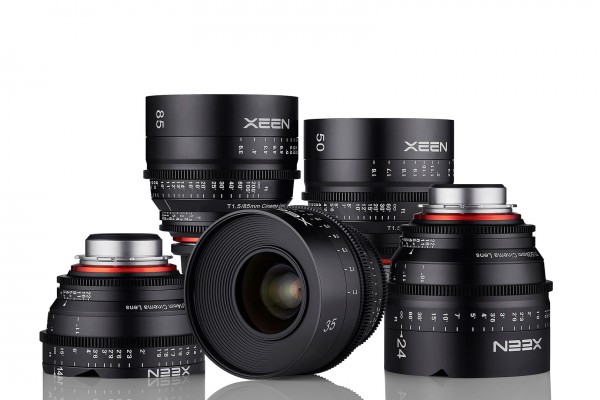Director Mark Hartley championed the Ozploitation thriller in Not Quite Hollywood. Now he dives deeper into the mire by remaking 1978’s Patrick. Drew Turney spoke to Hartley and his team.
Of the institutions shaping modern cinema, from superhero tentpole films to CG-animated family romps, just two of the defining crazes are the love of cult movies and the seemingly insatiable thirst to remake them.
When it comes to schlocky spaghetti westerns, badly-dubbed martial arts bloodfests and guys-in-rubber-suits monster mashes, we’ve all been swept up by the Tarantino effect – serious cineastes loving (or pretending to love) the products of the grindhouse era. And Hollywood’s cashed in mercilessly, serving up one (mostly asinine) retread of a classic video nasty after another.
Few of us who love movies were aware of Australia’s secret history of camp classics before Tarantino espoused his love for them, making them inherently cool. Before that, movies like Turkey Shoot, Stone, Mad Dog Morgan and The Man From Hong Kong had been forgotten, locked away like an embarrassing relative you have to hide from social gatherings.
The film that shone a light on the love of Ozploitation was the 2008 documentary Not Quite Hollywood, so it’s only fitting that the creative team behind it – director Mark Hartley, writer Justin King and cinematographer Garry Richards – bring us the modern update of one of Not Quite Hollywood’s subjects, 1978’s Patrick.
OZPLOITATION CLINC
Made by Aussie director Richard Franklin, Patrick is the story of a young man who – despite being in a coma – uses telepathy and telekinesis to wreak havoc in the clinic around him in his effort to make his favourite nurse fall in love with him.
For trivia hounds, the snake-eating-its-tail nature of cult movies was revealed in Not Quite Hollywood when Tarantino talked about having Uma Thurman lie in bed in a coma in Kill Bill, her eyes wide open as an homage to Patrick (the actress refused, considering the idea ridiculous).
Now, Not Quite Hollywood director Hartley has closed the loop completely with his remake. When spoke to the 45-year-old director in Melbourne, we expected to hear how he’d been a lifelong obsessive about the film, battling for years to bring it to the screen. The truth, however, was quite different. Patrick’s writer, Justin King, was a researcher on Not Quite Hollywood, and towards the end of production around five years ago, King and Hartley were musing on the trend of remaking classic cult movies.
“We were just sitting around and I said, ‘If we remade anything in Not Quite Hollywood, what would it be,’” the director remembers. “We agreed on two films – Razorback, because the technology now could really give you an amazing film, and Patrick because the central premise is fantastic and timeless.”
King and Hartley loved the idea of a guy with unlimited powers concentrating on something small and personal – the girl he loves. “Patrick was always very near the top of the list,” screenwriter King agrees.
POWERS THAT BE
One thing’s for sure – the trailer looks nothing like the made-for-peanuts films of the Ozploitation era. With acclaimed British actor Charles Dance and Oscar-nominee Rachel Griffiths on board, the acting pedigree is top notch. And the haunted-house style, thanks to the locations and veteran Australian cinematographer Garry Richards, makes it look every bit a classic gothic ghost tale.
Richards, who worked with Hartley on hundreds of music videos back when they were a viable industry in Australia, now makes most of his living with TV and cinema ads. Coming onto Patrick, the first thing he agreed to throw out was the look. “We decided early on there wasn’t going to be any visual resemblance to the original,” Richards says. “That film was very much a product of its time in terms of the look. It’s certainly not what you’d describe as an atmospheric-looking film.
“One thing I know about the original is that Richard [Franklin, director] wanted it to be a lot moodier than it was but he was constantly at odds with Don McAlpine [the veteran Australian cinematographer, whose most recent productions have included the Chronicles of Narnia and X-Men series], who wanted things to look ultra-realistic. From the very start I always said our film had to be incredibly spooky.”
OLD DOG, NEW TRICKS
In revisiting Patrick Hartley knew he had to be smart but also that he wasn’t stomping on hallowed ground for too many people. “There are certainly a lot of films that should be just left alone because they’re perfect,” he says. “But many haven’t aged well even though they still hold up.”
Both Hartley and King loved Patrick as kids, but say it was a perfect candidate to be remade because of its creakiness and because, while it has its fans, not many people would be up in arms about a remake. “You’re always going to be upsetting someone,” laughs King, “but the original isn’t an untouchable film.”
Hartley says he and King watched the 1978 original countless times to capture iconic lines and scenes they knew they’d have to reference – or at least pay a passing nod. They even had the original shooting script (which contained alternative dialogue) and the long-lost novelisation of the movie.
Cinematographer Richards had a very different approach – he stopped watching Patrick five minutes in. “I just didn’t want it influencing me creatively,” he says, adding that it was easier to just pretend the original didn’t exist. “There were visual references in more contemporary gothic horror and thriller films we wanted to head towards. Without meaning to sound insulting, we didn’t want it to look like an Australian film. We wanted it set in no particular place and be fairly ambiguous about the period.”
In fact, both Hartley and Richards mention the new wave of classic ghost stories like Spanish productions The Orphanage and Julia’s Eyes – movies more about mood and timbre than jump scares and bloodletting. “Nothing particularly horrific happens in them and they’re both beautifully photographed, much more about the atmospherics,” Richards says, something the new production hoped to emulate.
A SHARED VISIO
Creative loggerheads may have resulted in a disconnect between the look and premise of the first Patrick, but the new iteration was in no such danger. After a long career collaboration, Hartley and Richards were on the same page visually just like Hartley was with King on the script – unusually, discussions about the look predated the writing, and King kept it in mind throughout, something he credits to the relationship with his director.
Hartley says he and Richards also enjoy a shorthand that only comes with shared history.
“That was the great thing about doing music clips together, Garry and I wouldn’t really need to talk that much, so we could concentrate on the things that mattered on set,” Hartley says.
What’s more, a serendipitous turn of events gave Hartley and Richards the rare luxury of a lengthy pre-production period. Production was put on hold for so long waiting for cast availability, the team had much more time than usual to watch films and generate shot lists.
“We spent three or four months getting together for a couple of days a week, shot listing every scene and going over a lot of visual references,” Richards says. “We figured out the photography and production design and kept control over the whole palette, which resulted in a document that had several hundred pages of shot notes and visual references for the crew. So everyone knew the shots we were trying to achieve.”
When it came to the main production, Richards now doesn’t think the film would have been completed without it. “It was a struggle to get it shot in the 25 days we had but the fact we knew every shot in every scene helped. It allowed us to easily work out the key shots in a scene every morning that we needed to get, and which ones we could postpone if we needed to. We couldn’t have done that if we hadn’t had it so well planned out.”
This level of pre-planning also let the Patrick crew get through up to 30 set-ups a day – an incredible number for any film, especially one with the smooth, flowing techniques you can see in the trailer.
PATH TO PATRICK
Despite being first-time narrative filmmakers, Hartley and Richards have more experience in their little fingers than most Australians working in film today.
But talking to each gives you the sense that every few years, it’s a very different industry out there. When it comes to music videos, both men agree they used to have at least two elements you just don’t see anymore – budgets and crews. Some of the iconic music videos made in Australia in the 1980s had production values that would put plenty of major films today to shame, and Richards remembers how he got a leg-up.
“There’s no clear career path,” he says. “Me and the people I came out of university with just started doing stuff, really. MTV was really big at the time so we’d make stuff for free and send it to them. They’d play it but we were actually paying for it ourselves.”
But even the huge amount of experience they share didn’t guarantee a place in the big league. “When I was at film school we all thought we were going to make features before we were 30,” recalls Hartley. “Well, I was 40 when I made Not Quite Hollywood and 45 when I made Patrick. It took that long but eventually we got there. I’m not quite sure what those films would’ve been like if I’d made them earlier, but you’ve just got to keep shooting stuff. I was able to shoot 150 music videos and a lot of ads and every day on set I learned something new.”
NOTHING LIKE EXPERIENCE
Both Hartley and Richards also agreed it’s easier than ever to get the experience that can put you on the path. Regardless of the size of the industry, Hartley says there’s nothing stopping you from honing your craft by just doing it. “Anyone can pick up a camera and go and make a film. Maybe it might be harder to make a living, but there’s certainly a lot more opportunity to get experience.”
The story behind the Patrick team’s success is also mirrored in how they rose through the ranks – together. “Find people who also want to make films and surround yourself with them,” Richards says. “Hopefully one of them decides they want to be a director.”
Hartley agrees: “Get a good team around you, which you do through trial and error. I was lucky to start working with Garry early on and we’ve had that relationship for 20 years.”
If the look of Patrick is anything to go by, it’s a relationship that’s going from strength to strength, and the term ‘not quite Hollywood’ might not apply to the team of Hartley, King and Richards much longer.









